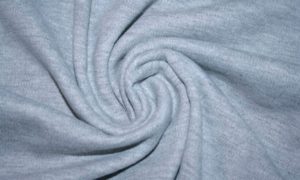 Knitted fabrics are a favorite material of fashion designers and stylists. Convenient for decoration, pleasant to the touch, knitwear has its connoisseurs. It goes well with other fabrics and is used to create interesting looks.
Knitted fabrics are a favorite material of fashion designers and stylists. Convenient for decoration, pleasant to the touch, knitwear has its connoisseurs. It goes well with other fabrics and is used to create interesting looks.
A special place among knitted fabrics is occupied by kulirka or kulirka, as it is often called. “Knitwear that doesn’t stretch” is what they often say about knitwear. This is indeed true: the stockinette stitch does not change in size in length. But this interesting knitwear still stretches in width.
The history of the kulirka dates back to the mid-16th century; it began with ordinary knitted stockings. In order not to knit every loop in them, a priest from England created a machine he himself invented. With its help, it was possible to pull the thread through all the loops in one row at once, securing each of them.
The kulirka is easy to guess among the knitted variety. Notable features of this fabric are:
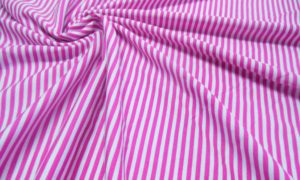 The group of weave fabrics includes materials made from different types of cotton yarn. The length of the cotton fibers determines the properties of the fabric made from them.
The group of weave fabrics includes materials made from different types of cotton yarn. The length of the cotton fibers determines the properties of the fabric made from them.
Types of knitted yarn used in the production of kulirka:
Short (Open End)
Short-staple cotton (up to 27 mm long) is the basis of a less smooth cotton fabric, which will not be able to hold the shape of the products and has a low cost.
Medium (Carde or Ring)
Medium-fiber cotton (27 to 35 mm long) produces a smooth, fairly elastic fabric. It retains the shape of products better than Open End canvases, but still not very well.
Long (Penya)
Long-staple cotton (from 40 to 80 mm) is the material for making the highest quality and most expensive coolers that hold their shape well.
When producing fabric, cotton threads are passed through a knitting machine so that the fabric is added in the transverse direction. Therefore, among experts, this surface belongs to the group of cross-knitted knitted fabrics.
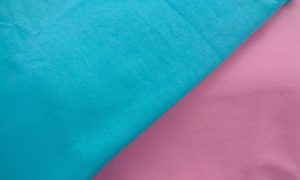 The different ability to retain shape caused by the length of the cotton fibers is not the only difference between the kulirka. Taking into account other features, several groups of lining fabric are distinguished.
The different ability to retain shape caused by the length of the cotton fibers is not the only difference between the kulirka. Taking into account other features, several groups of lining fabric are distinguished.
By type of material coloring:
According to the technology of creating a drawing:
Based on the presence of impurities in the yarn:
Reference! The optimal proportion of the composition of mixed knitwear is: cotton - no less than 90%, elastane (lycra) - no more than 10%.
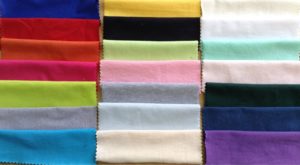 The popularity of knitwear is explained by the qualities of the material.
The popularity of knitwear is explained by the qualities of the material.
Advantages of the cooler:
Spavka! Thanks to hypoallergenic, the material can be safely used for newborns and people with hypersensitive skin.
Beautiful weave fabrics are attractive due to their optimal ratio of high quality and reasonable price.
And what I also like about the cooler is that it is very undemanding. Caring for products made from light and airy knitwear will not take much time and will not require special products.
Objectively assessing the fabric, it is necessary to note its shortcomings. It is also related to the composition of the canvas. Cotton has given the cooler its own peculiarity: the material becomes smaller when wet and “shrinks.” Without taking this into account, buyers of dry goods may experience disappointment after the first wash or rinse of items.
Advice! When buying clothes made from stockinette stitch, you should add one more size to the size. After washing, the clothes will acquire the desired parameters.
Another drawback, invisible to consumers, is noted by seamstresses. When cutting the canvas, they are faced with the fact that the edge of the cut does not remain horizontal, but quickly curls. This complicates the processing of slices. Therefore, it is easier for experienced needlewomen to work with it than for beginners.
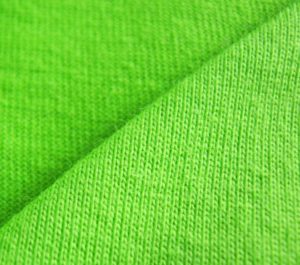 Due to its advantages, the cooler has found wide application in quality. Various products for adults and children are sewn from lightweight knitwear.
Due to its advantages, the cooler has found wide application in quality. Various products for adults and children are sewn from lightweight knitwear.
Clothing and diapers for newborns.
Children feel comfortable in soft onesies, vests, and hats.And adults know that the cooler will not lead to allergic reactions.
Important! Any new item from the cooler (especially items for children) must be washed before you start using it.
Home clothes.
Comfortable and beautiful bathrobes, home suits, and pajamas made from cotton wool are in well-deserved demand and become practical gifts for loved ones.
Casual wear
Light T-shirts, T-shirts, different types of trousers or shorts (loose or tight, for sports or walking) are also popular among buyers. In addition, fashion designers offer interesting models of women's clothing. Girls and women feel good in dresses, tunics, and skirts made of cotton wool even on hot summer days.
Products made from coolers will last a long time without requiring special care. Caring for things is simple.
Wash
 For washing, use warm water (not higher than 40°) and mild detergents. It is easy to wash the cooler by hand; when using a washing machine, a delicate wash cycle is recommended.
For washing, use warm water (not higher than 40°) and mild detergents. It is easy to wash the cooler by hand; when using a washing machine, a delicate wash cycle is recommended.
Spin and dry
In order not to damage the thin knitted fabric, you should not make special efforts when squeezing the products, much less use a washing machine for this.
Advice! You can speed up the drying of clothes by using a terry towel. When rolling knitted items into it, terry threads will absorb moisture and make the knitted surface almost dry.
For final drying, items are laid out horizontally. This avoids unnecessary stretching of wet fibers.
Removing stains
Complex stains from the surface of the fabric are removed with ordinary laundry soap. The product is soaked in a cold soapy solution; problem areas can be additionally soaped. After 20-30 minutes, rinse the clothes thoroughly.
Advice! When using special stain removers, you need to select substances designed specifically for delicate fabrics.
Ironing
Iron knitwear with an iron heated to no higher than 110°; higher temperatures can damage the structure of the fibers.
Proper care will prolong the pleasure of using the stockinette.